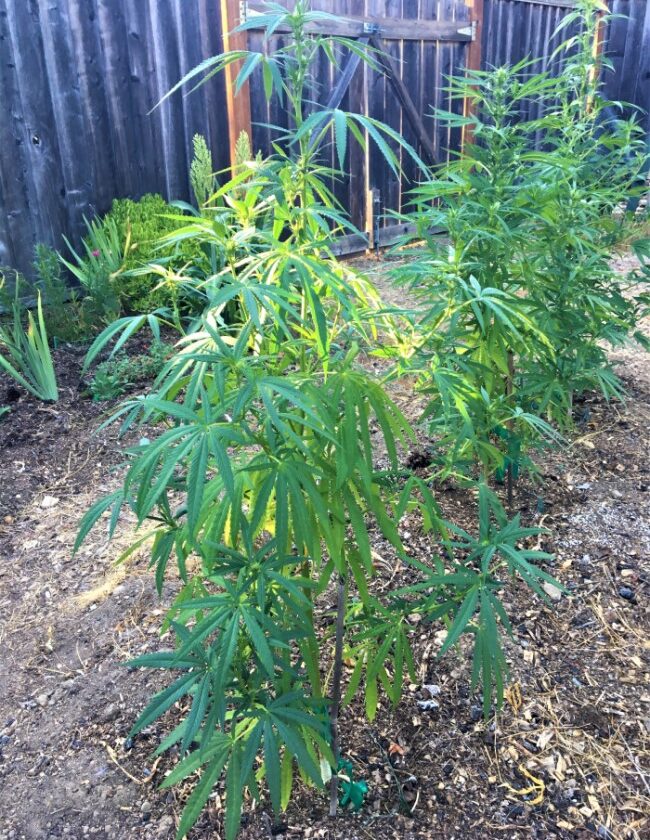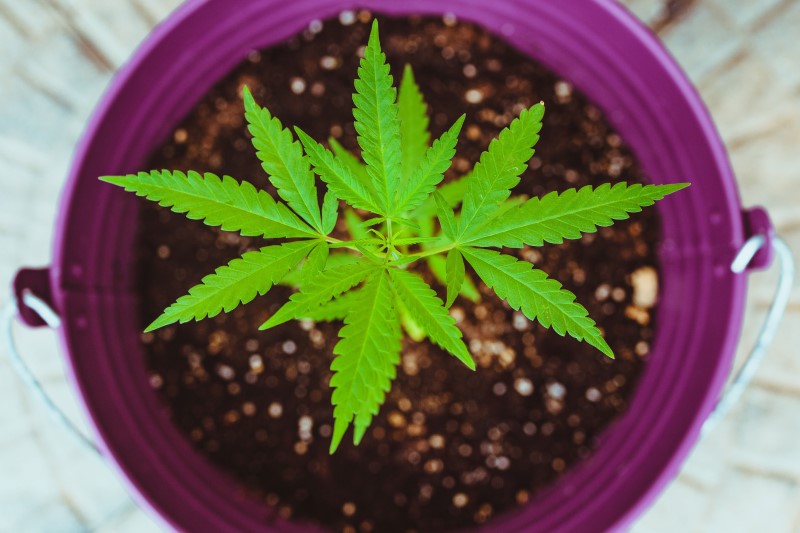Growing Cannabis
Riding the Mighty Cannabis Wave
By Josh Reilly
We are presently riding a mighty cannabis wave. Legalization is spreading, state by state. There is an ongoing revolution in the art and science of cannabis culture. While most buyers know something about THC and CBD, whole families of psychoactive and medically significant cannabis derivatives are now under study. Interest in the subtle mental states entered and wide array of afflictions potentially treated by cannabis has never been greater. You could spend your life in that library, but I enjoy being out in the garden, which is where I recommend you grow cannabis. Now that cultivation of small quantities is legal in California, why go to the trouble and expense of indoor cultivation?

It’s a bit late to germinate cannabis plants from seed, but the Summer Solstice is a good time to put 4 to 6 inch seedlings or clones in the ground. Local cannabis retailers mostly sell clones, not seedlings, due to high market demand for specific horticultural and neuro-active features available with clones. Clones lack the vigor of seedlings but are still easy to grow in the SLV. Seedlings (sprouts from seeds) are hardier, but the end product may vary in productivity and quality. And you have to know how to tell male plants from females. I have grown both and I am not particular.
I love growing cannabis. It is a big, elegant plant when fully mature. Its branches have a tidy symmetry, but covered in their signature serrated, odd numbered leaf clusters, it is dense and lush. The flowers bulge and glisten with a sticky dew (“trichomes,” containing THC, CBD, CBN, etc). What I love most, though, is the delightfully rich fragrance. Fragrances differ with species and variety, from “Christmas cookie” spiciness to dank and pungent, not unlike Salvia, to a swampy, “skunk bud” smell. At harvest, the smell is complex and rich. Curing and drying produces a whole different set of odors. I am not an avid user. I smoke bud as much for the spicy herbal flavor as anything else. I love to simply run my hands over the leaf and buds, late in the season, and breathe in the bouquet.
Grown outdoors, cannabis has few pests. Traps for wood rats may be required. I always use wire gopher baskets. White flies and aphids are easy to control with insecticidal soap spray (early on, before budding) or better, a few stiff hose blasts. Avoid high Nitrogen fertilizer, like Fish Emulsion or manure. Nitrogen stimulates rapid foliar growth, which attracts white flies, aphids, and mites. Diseases like powdery mildew should not be a problem outdoors.
Cannabis isn’t particularly thirsty. Water thoroughly upon planting and for a few weeks after that. Once plants are established, allow the top few inches of soil to dry between waterings. A 3 or 4 inch layer of mulch helps, but don’t cover the stem at the base. I water in with a Vitamin B-1 root stimulant, then fertilize every 4 or 5 weeks with a balanced NPK fertilizer. Compost tea is also a good choice. I am agnostic regarding high phosphate “bloom” fertilizers. This resilient plant does well in a leaner soil. Commercial growers, of course, want dense clusters of big, moist buds. But I am a backyard amateur. I don’t want dank, fat buds that knock me flat for 4 hours after 3 hits. I already can’t find my wallet and keys most days. Lean, moist, little amber-tinted buds are just fine for me. I don’t even separate all the leaf from the dried buds. Old school readers will relate.
Where was I? Oh yeah. Plant seedlings in full sun at least 2 feet apart for good light exposure and air circulation. Most cannabis varieties require 15-hour Summer days to properly mature. If you grow your cannabis in pots, double the above described watering and fertilizing schedule.
Josh Reilly, aka Uncle Skip, writes about seasonal gardening from his home in beautiful Ben Lomond, California.
Featured photo of cannabis seedling by Matthew Sichkaruk
The San Lorenzo Valley Post is your essential guide to life in the Santa Cruz Mountains. We're dedicated to delivering the latest news, events, and stories that matter to our community. From local government to schools, from environmental issues to the arts, we're committed to providing comprehensive and unbiased coverage. We believe in the power of community journalism and strive to be a platform for diverse voices.





